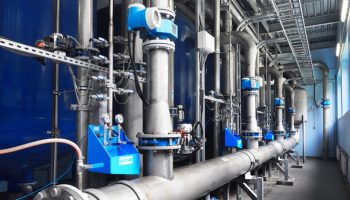Pipe relining is a modern drainpipe restoration procedure, but people are unsure if it will benefit them with the sewage line issues.
The drains may not be functioning for a variety of reasons: Pipe destruction, years of cumulative blockage, or root invasion from surrounding trees and bushes may all be factors.
What is the process of pipe relining solutions, and why would anyone prefer it over conventional drain repair methods? Pipe relining is a modern form of technology that can fix drain pipes that are plugged, broken, or damaged.
The most significant distinction between conventional pipe maintenance and pipe relining is that it is performed above the ground. This means there will be almost no drilling and, as a result, no harm done to the house.
Besides that, the new pipe formed inside the host pipe will be more resilient and will prevent potential pipe issues such as root penetration, splitting, pipe isolation and faulty joints. Property owners and company owners should rest easy, trusting that their drains will not clutter up again too quickly.
The relining process:
Pipe relining solutions employ the same techniques to address a variety of drain problems. To begin with, a trained technician uses the CCTV equipment to inspect the setup. A broken pipe, unevenness, ageing pipe, or incomplete parts can all be seen from the real-time video.
And after that, by using the hydro-jetting process, the drains are swept, rinsing out years of scale, dirt and blockages, and fitting the inside pipe for the lining.
The professionals design a bladder and lining that is custom-made for the drain and pulled into place. The liner is ensured to span the broken portion of the pipes using CCTV devices.
Compressed air pumps up the liner, causing the unique epoxy resin to adhere to the drain’s inner bore. The resin will cure after a few hours and shape a new pipe within the existing one. The bladder is deflated and it is removed, leaving a better foundation that allows the drain to function again.
Technicians perform a final CCTV examination of the drain to ensure that the job is completed correctly. People now have a completely functional drain in just a few hours that would last a lot longer.
Pipe relining is an easy but efficient method of pipe repair that outperforms conventional pipe repair. The interior of the pipe is made of flat, seamless plastic that is several times stronger than PVC.
The relining procedure removes the need for pipe repair and excavations, as well as costs associated with landscape reconstruction. It’s a non-destructive solution to drain repair that avoids traffic jams, structural destruction, trench drilling, and other issues that come with conventional drain repairs.
The modern jointless structure has its own set of advantages. Since debris won’t cling to the inner bore, calcification will not be a major issue. It can handle more pressure than conventional drain materials and can also increase total flow and efficiency. It’s clearly the better option when people need the drain lines repaired quickly and effectively.
Pipe patching:
Pipe patching is a similar process to relining, and it requires the pipe to be fixed without having to dig up the pipe or harm any connected fixtures. Patching is usually needed for localised cracks or splits in tubing, and it requires a few hours to be completed.
Only a portion of the pipe has to be replaced rather than the whole pipe being relined. Pipe patch management is not only the most common but as well as the most cost-effective method of pipe repair. Smaller holes and leakage in the pipes should be treated by patching rather than relining or removal. It’s a long-lasting solution that won’t need to be replaced or maintained on a frequent basis and can permanently solve the problem without the need for massive drilling or operating costs.






